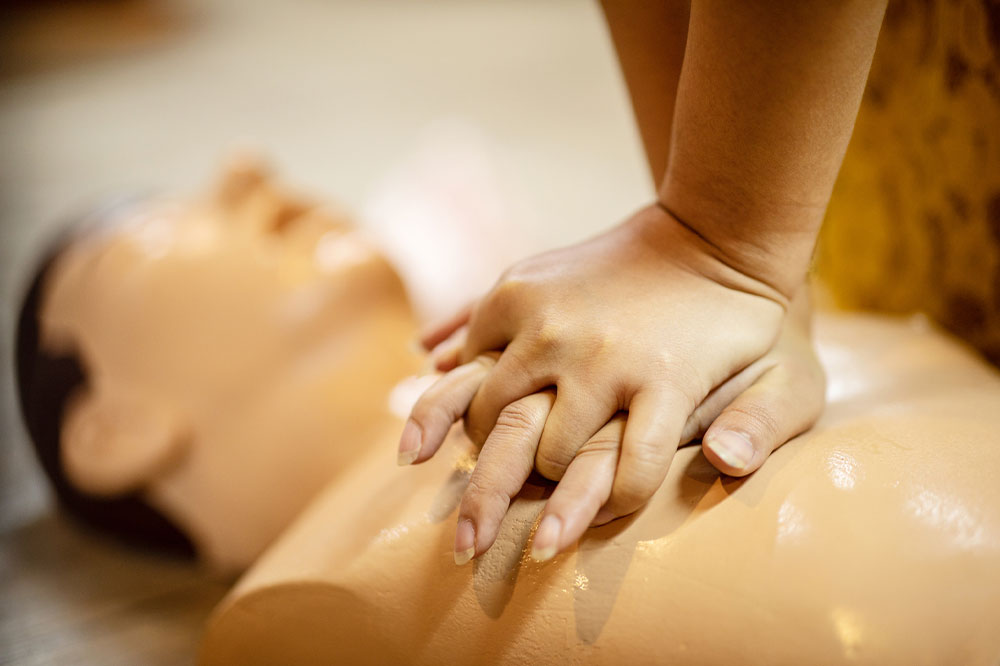
Key steps for performing CPR
Cardiopulmonary resuscitation (or CPR) is a lifesaving technique utilized in emergencies like heart attacks or drowning, where the heart stops and needs to resume pumping. According to the American Heart Association, this lifesaving technique can double or triple the chances of survival. While all health professionals undergo CPR training, it is important for everyone to learn this first-aid technique to help people in need. Here is what you should know:
Primary check
Before initiating cardiopulmonary resuscitation, you should make sure that the surrounding environment is safe for the person in need and also check if they are conscious or unconscious. This is part of the primary checks you need to conduct before deciding to perform CPR. If the person is not responding, the first step is to call 911 to make sure help arrives in a timely manner. The healthcare providers have an AED (automated external defibrillator), but you can check if an AED is available at the location before first responders arrive.
If the AED is available, you can start the machine and follow the instructions. The instructions call for delivering one shock to the person and then starting with the CPR procedure while waiting for emergency services.
Step-by-step procedure
CPR uses a three-step process indicated by the acronym C-A-B or compressions, airway, and breathing. Here is what the process entails:
Compressions: The purpose of this step is to restore the blood flow in the body. This step requires you to use your hands to push down on the chest of the person in a specific manner to restore blood flow to the heart. Here are the steps to follow:
– Put the individual on their back on a firm surface.
– Now, kneel next to the person’s shoulder and neck.
– Place your hand—the lower palm or the heel of the hand—over the chest area, between their nipples.
– Now place your other hand on the first hand and keep your elbows straight. Make sure to position your shoulders directly above the hands.
– Once you have placed your hands properly, you can start the compressions. You will have to push straight down (between 2 and 2.4 inches) on the chest. Do not push harder than that. Don’t use just your arm’s load, but your entire body weight during compressions.
– The American Heart Association suggests using the beat of the Stayin’ Alive song to keep doing the compressions. Make sure you allow the chest to prop back up after every push. It is advised that you push hard at the rate of 100 to 120 compressions in a minute.
– Continue the compression exercises till you see any sign of movement in the person or till emergency personnel takes over.
You should have undergone CPR training to be able to move on to the next steps: opening up the airway and rescue breathing.
Airway: This step helps open up the person’s airway. Here, you have to perform 30 chest compressions on the individual, and then you can open their airway by using the head-tilt/chin-lift maneuver. This is done by using the palm of your hand to gently put on the forehead and then tilt the head back. With the other hand, you can gently lift the chin forward and open the airway.
Breathing: The third step involves providing rescue breaths to the person. You should be well-versed in the CPR technique to perform this step. Here, the rescue breath is given mouth-to-mouth or mouth-to-nose. Mouth-to-nose rescue breath is preferable when the mouth is seriously injured and cannot be opened. Today, a high-efficiency particulate air filter called HEPA is used for rescue breathing. The technique involves the following steps:
– After opening the airway, you will have to pinch the nostrils of the individual shut so you can perform mouth-to-mouth breathing. Place your mouth on top of the person’s mouth, making a seal.
– Now prepare to give the first rescue breath. It should last one second, and check if the chest rises when you give the first breath.
– If the chest rises, you can give a second breath. If the chest does not rise, this means that the airway has not been opened properly.
– Perform the second step again to open the airway properly and then give the second rescue breath.
– Resume chest compressions after giving the second rescue breath.
If an AED is available, you can follow the instructions on the machine and give a shock to the individual. Following this, resume chest compressions and wait for two more minutes before giving another AED shock. Ideally, at this point, a healthcare professional can take over to carry out CPR steps.
It is important to remain calm in these situations and always make sure that you call 911 before initiating the CPR process.




